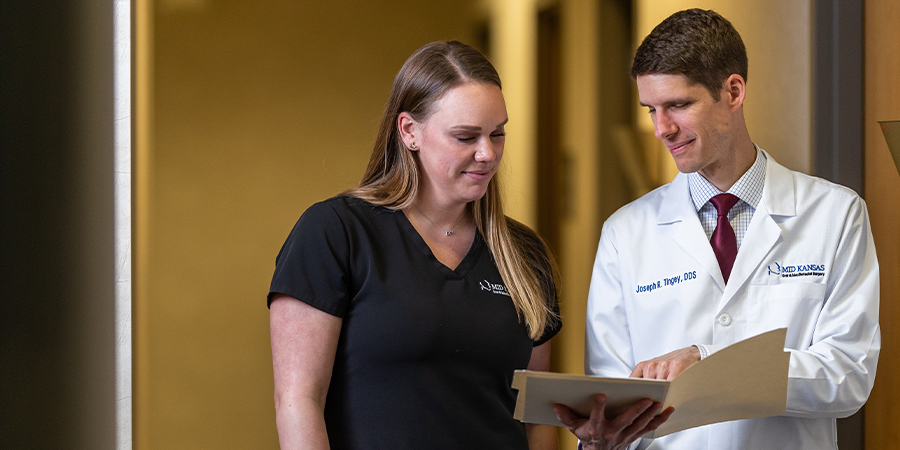
Losing your teeth often results in the loss of bone tissue. Without stimulation from teeth, bone mass begins to atrophy and resorb. This loss of bone can impede dental restoration, and may also lead to unwanted changes in your facial appearance. These issues may be avoided with bone grafting, a surgical procedure that regenerates bone where it is needed most.
Reasons Bone Grafting May Be Used
There are several reasons why patients may require a bone graft. Some of the most common reasons include:
- Preparation for dental implants. Adequate bone tissue is needed to anchor dental implants in place. Bone grafting is a necessary step toward dental implants when there is insufficient bone.
- After tooth extraction. Tooth extraction often leads to a loss of surrounding bone. Bone grafting is performed at the time of or following tooth extraction to help restore this lost tissue.
- To augment sinus position. The position of the sinuses in your top jaw may prevent proper positioning of dental implants. Bone grafting may be necessary to augment the position of your sinuses for successful implant placement.
- To preserve facial structure. As the jawbone atrophies, it may cause unwanted changes to your facial appearance. A bone graft can help prevent these unwelcome changes.
- Recovery from gum disease. Periodontal or “gum” disease can result in the resorption of bone from around teeth and dental implants. A bone graft can help regenerate bone in these areas.
What to Expect During a Bone Graft
Prior to surgery, your doctor will explain all the steps in the process, answer your questions, and discuss after-care. Your surgeon will also outline the options for sedation, ensuring you are comfortable and pain-free throughout your procedure.
There are multiple options that may be utilized as the source of your bone graft. Fortunately, it is unlikely that your surgeon will need to harvest this bone from anywhere in your body. It is most often obtained from a donor source, and following surgery, the bone graft will heal or “fuse” with your bone in several months.
Following your bone graft healing, your mouth will be ready to have dental implants placed. The stimulation provided by the dental implants will help prevent further atrophy of your jawbone structure.
Comfort and Recovery After Your Treatment
Before you head home from your procedure, your oral surgeon will provide instructions on how to care for your wound, minimizing the risk of infection or complication. While some minor pain and swelling can be anticipated, your doctor will provide options for minimizing discomfort and improving recovery.
The Bone Grafting Results
Bone grafting can help regain the bone tissue you need to maintain your facial appearance, anchor dental implants, and ultimately enjoy a healthy and confident smile. To learn more about the bone grafting process, we welcome you to contact Mid-Kansas Oral & Maxillofacial Surgery at (316) 722-0800.


